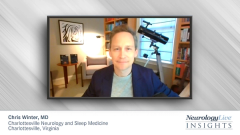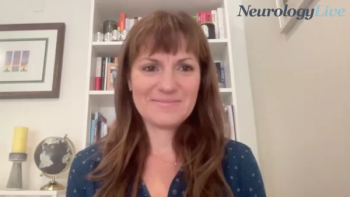
An Overview of Narcolepsy: Causes, Subtypes, and Symptoms
An expert shares broad perspective on narcolepsy, discussing its causes, differences between types 1 and 2, and symptoms that may occur in patients.
Episodes in this series

Transcript:
Chris Winter, MD:Narcolepsy is a condition that is characterized mainly by an individual who has an overwhelming or an excessive drive to sleep. I would say fundamentally narcolepsy is a condition of excessive daytime sleepiness. It is caused by the lack of or insufficiency of a chemical in our brain called either orexin or hypocretin. It’s the same chemical. It was given 2 different names by 2 different laboratories. The purpose of that chemical is to actually stabilize wakefulness in our brain. When we don’t have that chemical or it’s not present in sufficient quantities, no matter how much we sleep, we still have a drive often to sleep throughout the day. Narcolepsy is characterized as either type 1 or type 2, usually by the presence of a symptom called cataplexy, which is what a lot of people think about when they think about narcolepsy. That’s when you’re walking down the street and suddenly you fall over asleep, which is not entirely what cataplexy is. Cataplexy is just a loss of muscle tone that can either be profound or actually quite subtle when somebody has some sort of emotion, either laughter or being upset. Usually, we describe narcolepsy type 1 as people who have that symptom, cataplexy, and type 2 people who do not. But really type 1 and type 2 probably refers to the presence or absence of that chemical orexin, but since we don’t typically test for it because it involves a spinal tap, we usually differentiate type 1 and type 2 by the presence of cataplexy.
The signs and symptoms of narcolepsy are all at once easy to see and very difficult to see. The cardinal feature, the feature that’s there 100% of the time, is something we refer to as excessive daytime sleepiness, sometimes abbreviated EDS. That’s an individual who seems to be exhibiting a much stronger drive to sleep than normal. It’s a child who gets off the school bus and immediately takes a 3-hour nap before getting up, doing some homework, and going right back to sleep again and sleeps 13 hours on the weekends. No matter how much they sleep, they always seem to be sleepy. Thus, that excessive sleepiness, do you fall asleep when you’re in meetings? Do you fall asleep when you’re trying to read books for pleasure or for work? Are you falling asleep at stoplights? Those are some signs that we often look for in terms of determining excessive sleepiness. We also mentioned cataplexy, that’s sort of the second feature of many patients with narcolepsy, not all of them, where they have this sudden loss of muscle tone. A lot of people think about that as literally falling over, but it can be much more subtle, a head bob or jaw weakness, or weaknesses in the hands or upper extremities.
The third feature is hallucinations, either as you’re falling asleep or as you’re waking up, such as a cat walks through the room, you have a conversation with somebody that didn’t really happen, difficulty differentiating, “Did I really experience that in the morning or was that an hallucination?” The fourth is sleep paralysis, an individual who awakens and becomes conscious but can’t move in the bed for a period of time. It’s often very scary to people who can often feel like they can’t breathe, that they’re suffocating. The fifth is fragmented sleep. Despite the fact that these individuals with narcolepsy are excessively sleepy people, their sleep quality at night is often very fragmented, so much so that they can often resemble people with insomnia, what I would consider to be the opposite side of that sleepiness spectrum.
Transcript edited for clarity.
Newsletter
Keep your finger on the pulse of neurology—subscribe to NeurologyLive for expert interviews, new data, and breakthrough treatment updates.




















